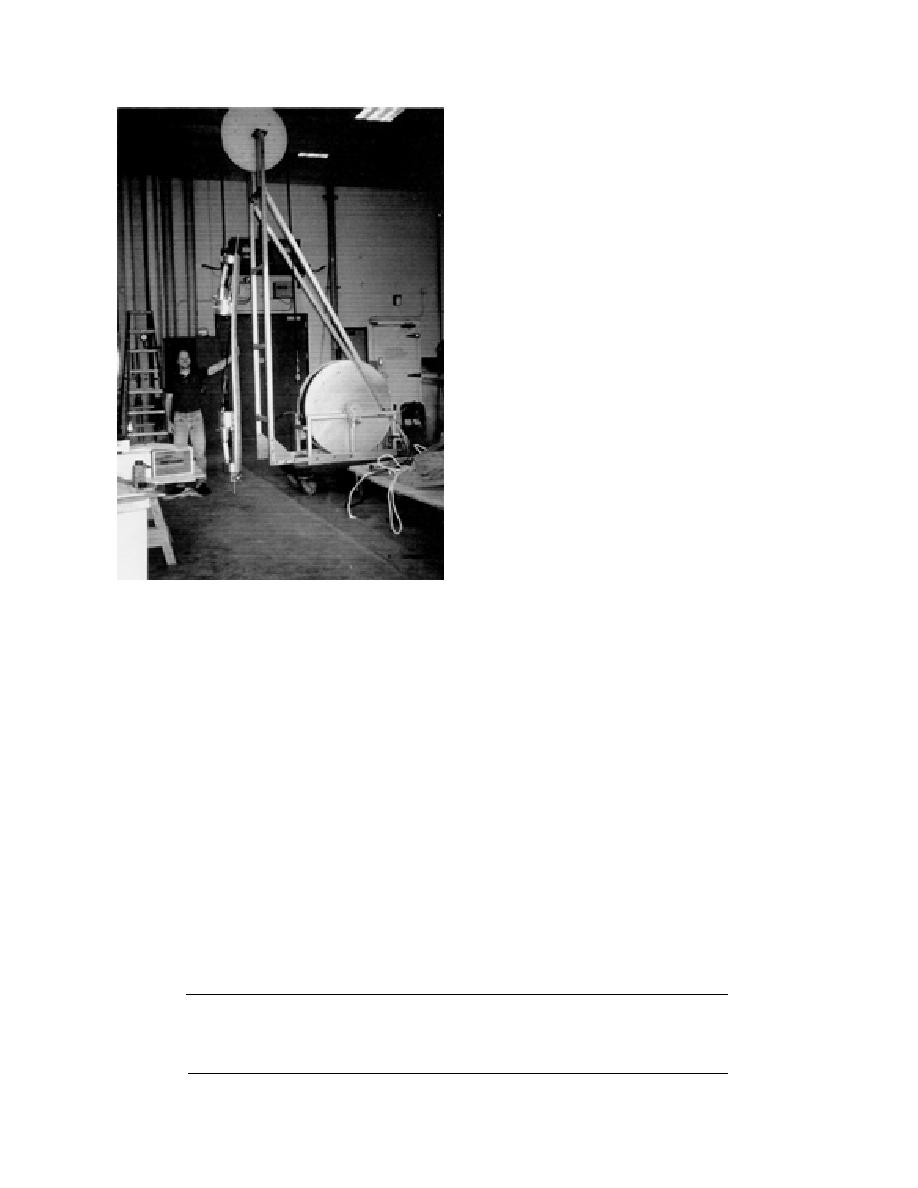
for the collector to climb up the ramp to a location
with a 45 downward slope. Pump suction did not
affect collector mobility.
We conducted four quantitative collection effi-
ciency tests, all using the 1.2-m collector in the 1.5-
m iced tank. In all four cases, we used a 53-m
polyester filter and a 5-cm-wide strip of LDPE as
a check valve. We again used mixtures of stainless
steel, glass spheres, and silica sand to simulate
micrometeorites in a size range 60400 m. We
weighed the particulates added to the tank before
testing and the particulates recovered from the
collector filter after testing to determine the over-
all collection efficiency. Table 2 summarizes the
results of these tests.
The ice surface formed on the cold plate was
quite flat across the tank (with only 3- to 5-cm-wide
strips of thinner ice along the tank walls) and gen-
erally very smooth (with only a few isolated de-
pressions 12 mm deep and 12 cm wide, made as
we added water to fill the tank). We tested the col-
lector on this smooth ice during the first, and half
of the second and third, collection-efficiency tests.
For half of the second and third tests and all of the
fourth test, we roughened the ice with a water jet
to create numerous depressions 210 mm deep and
12 cm wide.
Figure 8. 2.5-m operational collector suspended from
The collector suctioned test particles very well
the cable on a winch.
from smooth ice surfaces, collecting almost all the
particles in a single pass. Particles remaining after
the first pass were usually concentrated in the lo-
could submerge the iced ramp in a 9-m-wide
cal depressions. Each additional pass would re-
37-m-long 2.4-m-deep refrigerated basin. This
trieve some particles from the depressions, but the
collector would not generally clean them entirely.
provided the most realistic simulation of the collec-
Nevertheless, the first three tests all yielded col-
tor 's operation in the SPWW; however, we were
lection efficiencies over 99% (Table 2) despite the
unable to conduct quantitative collection-effi-
presence of intentionally roughened ice during half
ciency tests with this arrangement.
of the second and third tests. Interestingly, the col-
We quickly found that collector maneuverabil-
lector achieved these high collection efficiencies
ity was very good on both the flat and curved iced
despite leaving clearly visible patches of particles,
surfaces. The heavy spiked wheels provided ex-
mostly concentrated in the depressions but also in
cellent traction, and motor torque was adequate
Table 2. Summary of quantitative collection efficiency tests. All tests were con-
ducted in 1.5-m iced tank.
Material
Material
added
recovered
Percent
Date
(g)
(g)
recovered
Remarks
29 Jun
390.1
387
99.21
Smooth ice, multiple passes
30 Jun
100.1
99.54
99.44
Smooth ice surface 50 g, rough ice 50 g
6 Jul
100.0
99.46
99.46
Smooth ice surface 50 g, rough ice 50 g
10 Jul
231.51
206.38
89.15
Rough ice surface
11



 Previous Page
Previous Page
